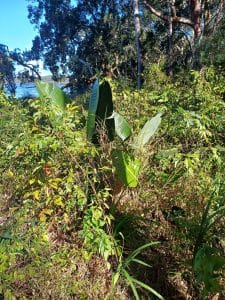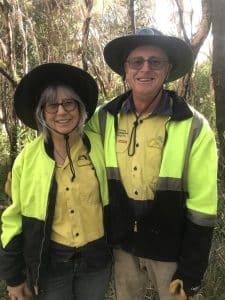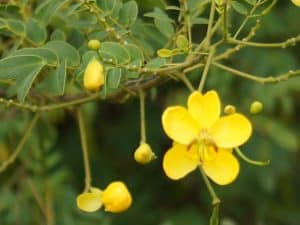“Why doesn’t Council control Lantana?”…and other reflections on backyard weed inspections

I’ve been working a day a week or so over the last few months, in my regen contractor role, for MidCoast Council’s Backyard Biodiversity inspections in Smiths Lake, and I’m about to finish up for this time around. It’s been an interesting experience for someone working with weeds in Landcare and in the bush – seeing the massive assortment of weedy plants thriving in people’s backyards, but also some very beautiful and well kept native and “hybrid” native/exotic gardens. Even more interesting, the range in attitudes regarding responsible gardening, from very engaged and proactive, through interest but not enough time, energy or mobility to deal with issues in the backyard, to apathy (unfortunately quite common) to aggressive rejection of nosy weed officers (fortunately rare). This sample of personal attitudes is of course skewed – we see those who either made an appointment to be present for the inspection or those who happen to be about when inspectors randomly arrive during business hours.
A common theme in residents’ questions of weed officers, whether from concerned curiosity or as part of arguing against inspections, is along the lines of “Why could you be bothered with checking my insignificant backyard when Council doesn’t control the obvious Lantana infestation in the reserves?” This kind of question goes to the heart of confused public perceptions about weed management, so I’d like to share the gist of the kind of answers I try to give if the asker has time to hear it:
We’re doing this because we’re trying to stop the “Lantanas” of the future from taking off in our area. They say “an ounce of prevention is worth a pound of cure”, but with weeds it’s fair to say an ounce of prevention is worth a ton of cure. By far the most efficient use of Council Weed Officer resources is surveilling and eradicating new weed threats. Meanwhile, Council does invest significantly in managing Lantana and other widespread weeds. Widespread weeds like Lantana are managed on an “asset protection” basis, which means bush regeneration principles are used to protect and enhance high value natural assets. We focus on the best, most diverse and resilient bushland remnants, and work our way out from their least weedy areas. It’s far more efficient to build on existing pockets of resilience, rather than trying to build resilience from scratch. Council contractors have been killing acres of Lantana right here in Smiths Lake, but chances are you won’t have noticed. It seems counter-intuitive, but the obvious wall of Lantana along the road or along the edge of a reserve is typically a very low priority when we’re allocating limited bush regeneration resources, because it typically represents the most work for the least outcome, or even a negative outcome. Often a big obvious weed patch on the disturbed edge of a reserve is actually serving a useful function by blocking light, wind, weed seeds and foot traffic – it’s not unusual to leave a nasty looking weedy edge alone for years while spending lots of time working deeper in the reserve.
The inspections highlighted the scale of the continual slow-burning threat of emerging weeds adding to the many impacts on our precious biodiversity. There is an ongoing perverse incentive for nurseries to sell weedy plants – they are easy to propagate, often look pretty at the point of sale, and margins are good. Regulation of the sale of weedy plants is unfortunately a slower moving beast than the weeds, and a proactive approach is difficult to achieve. A good example of a serious emerging weed on the MidCoast being routinely newly planted in gardens is Strelitzia nicholai (aka East-West palm or giant bird of paradise) – readily available in mainstream nurseries and big hardware chain stores. It looks lovely and tropical when small to medium size, but grows huge (12m!), unmanageable and ugly, and its fruit is taken by birds, who spread it into local reserves. It is popping up everywhere and is fast-growing and difficult to kill. Other rampantly spreading offenders locally that are very common in backyards and widely regarded as benign garden plants include Kahili Ginger (aka Ginger Lily), Indian Hawthorne and Sweet Vibernum.

Ochna, featured in this newsletter, whose severe weediness has long been indisputable, is also widespread in gardens. Council is going to invest in treating Ochna on private properties in Smiths Lake due to its heavy impact on nearby reserves, and we’ve been treating some of them as part of inspections.
There have been some great interactions with friendly householders, and some enthusiastic uptake of weed advice. My favourite example came from a nice bloke who had a walk and talk with us as we did our inspection, who was quite taken aback when we discussed how weedy his Kahili Ginger was. He said he’d mention it to his neighbour across the road who had a huge patch of it – the neighbour was out so we didn’t see him to have a chat ourselves. When we passed their properties again a couple of weeks later, the huge patch on the neighbour’s place was gone!
A novel weed found last week was Devil’s Fig Solanum torvum – a plant that grows a bit smaller than the already widespread Tobacco Bush, but which is spiky and more toxic. This weed is a big problem around the NSW North Coast, and is being eradicated from surrounding shires – look out for it around Smiths Lake!
A major win for the inspections, which in itself made the whole protracted process worthwhile, was the identification of an African Olive outbreak, complete with a likely “mother tree” on a vacant lot that borders the lake foreshore reserve. This big, hardy, long-lived invasive tree is a major problem in the Hunter Valley and we want to keep it out of our area, so eradication works are already underway.
Weed biosecurity is everyone’s duty – if you see a new weed or suspicious plant, please take a good photo and send to terry.inkson@midcoast.nsw.gov.au




